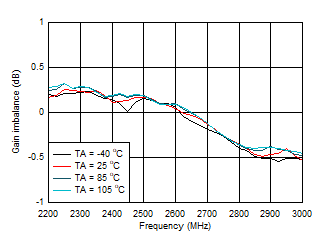SNLS634 June 2020 LMH9126
PRODUCTION DATA.
6.6 Typical Characteristics
at TA = 25°C, VDD = 3.3 V, differential input impedance (ZIN) = 100 Ω, single-ended output impedance (ZLOAD) = 50 Ω, and POUT(TOTAL) = 8 dBm into ZLOAD = 50 Ω (unless otherwise noted)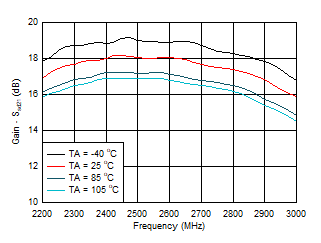
| POUT = 2 dBm |
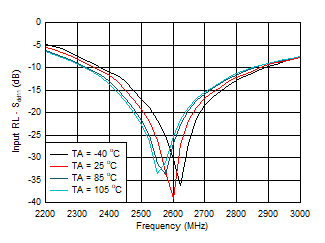
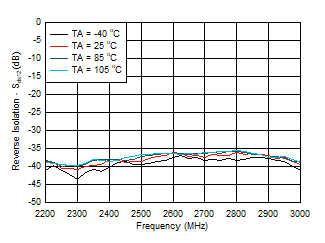
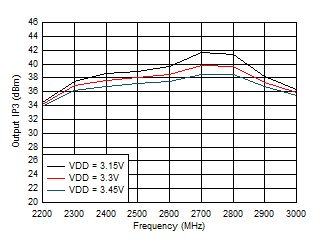
| POUT/TONE = 2 dBm, 10-MHz tone spacing |
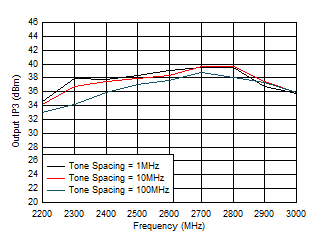
| POUT/TONE = 2 dBm |
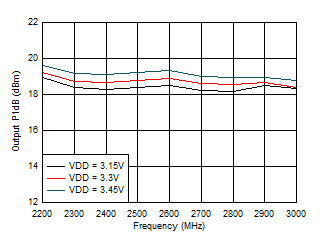
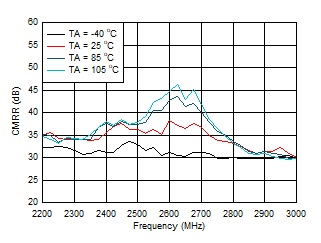
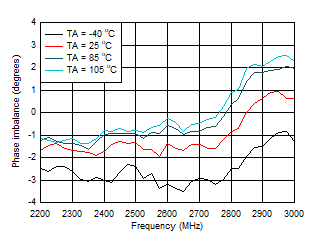
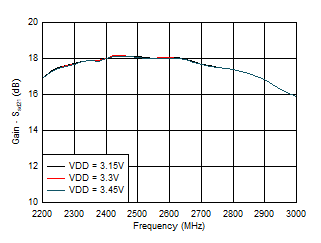
| POUT = 2 dBm |
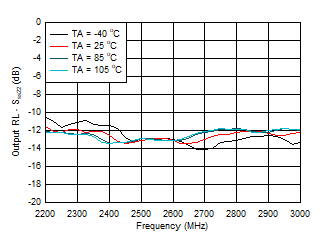
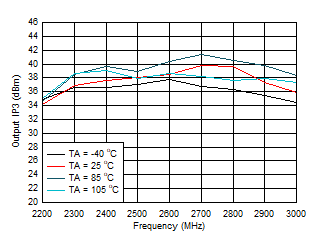
| POUT/TONE = 2 dBm, 10-MHz tone spacing |
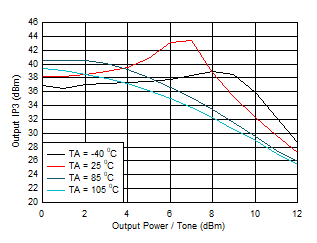
| f = 2.6 GHz, 10-MHz tone spacing |
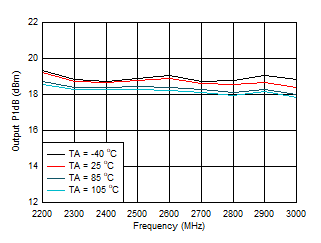
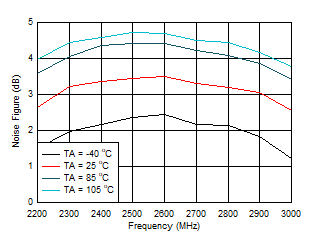
| ZSOURCE = 100-Ω differential |
